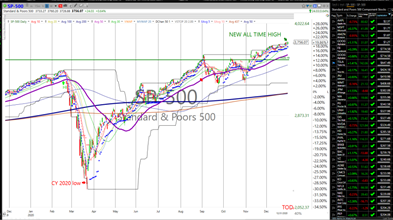There’s still time to contribute to your IRA!If you haven’t already contributed to an IRA (Individual Retirement Account), there’s still time to do so. Many...
Ten Ways to Show Veterans We Care
Every year on Veterans Day, we take time to think about the sacrifices made by those in uniform. We say, “Thank you for your service,” to any veterans we know. Perhaps we attend a local parade or event that celebrates veterans.
Those are all good and important traditions. It strikes me, though, that those who have given so much in return for so little deserve even more – not just on Veterans Day, but every day.

With that in mind, I decided to research ways to better express my gratitude toward our veterans. Here are some of the best ideas I found:
Serve
Just as veterans serve or have served our country, we too can serve our veterans. For example:
1. Volunteer at your local VA Hospital. Offer to transport veterans to and from the hospital or visit the patients who are being treated there. You can even find a volunteer sign-up sheet by visiting https://www.volunteer.va.gov/FAQs.asp.
2. If any veterans live nearby, take time to rake their leaves, shovel their walks, clean their rain gutters, etc. This is especially helpful for older or disabled veterans!
3. Don’t forget veterans’ families! If you know anyone currently serving abroad, their family could likely use a helping hand, whether it’s cooking a meal or offering to babysit.
Donate
If you don’t know any local veterans, or don’t live near a VA, donating your money (as opposed to your time) can be equally helpful! Here are some ways to do that:
4. Donating funds to a nonprofit organization or veterans group is always a good thing to do! There are many such organizations, like the USO, Wounded Warrior Project, and VFW (Veterans of Foreign Wars).
5. Donate clothes, books, DVDs, or games to your local VA hospital or veterans’ organization.
6. Donate any frequent flyer miles you have to wounded or sick service members, so they can visit their families or travel to a specialized treatment center. Learn more at https://fisherhouse.org/programs/hero-miles/.
Demonstrate
Simply showing your appreciation through acts of kindness can make a veteran’s day. For instance:
7. If you see a veteran in a local restaurant or coffeehouse, quietly ask to pay their bill.
8. If you own a business, offer a special discount to veterans.
9. Write letters to veterans, especially those still on active duty. There are many organizations that facilitate this sort of thing. Simply Google “write letters to veterans” and you’ll find plenty.
10. Along those lines, drop a handwritten card or note in a veteran’s mailbox letting them know how grateful you are for their service.
The freedoms we enjoy every day aren’t just guaranteed by the Constitution. They’re guaranteed by the men and women who stood up and said, “I will serve.” We can probably never repay the debt we owe them – but we can certainly do our best to try! From all of us here at Research Financial Strategies, I’d like to say, “Thank you” to our veterans. We wouldn’t have a nation without you.
Happy Veterans Day!







